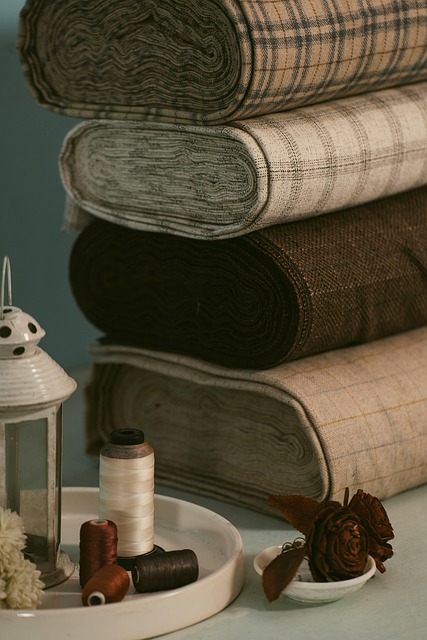Woven Wonders: The Resurgence of Macramé in Modern Home Decor
In a world where mass-produced items dominate, the artisanal charm of macramé is making a triumphant comeback. This intricate craft, with its knotted elegance and bohemian flair, is weaving its way into contemporary homes, adding texture, warmth, and a touch of handmade luxury. From statement wall hangings to delicate plant holders, macramé is proving that what's old can indeed be new again.

The Roots of Macramé
Macramé’s origins can be traced back to 13th-century Arabic weavers, who used decorative knots to finish the edges of hand-loomed fabrics. The word itself comes from the Arabic migramah, meaning fringe. As trade routes expanded, the technique spread across Europe, finding particular favor with sailors who used their rope-tying skills to create intricate decorative items during long voyages.
The craft saw a significant revival in the Victorian era, adorning everything from curtains to tablecloths. However, it was during the 1970s that macramé truly exploded in popularity, becoming synonymous with the decade’s bohemian aesthetic. Plant hangers, wall hangings, and even macramé clothing became ubiquitous, only to fall out of favor as tastes shifted towards minimalism in subsequent decades.
The Modern Macramé Movement
Today’s macramé revival is characterized by a fusion of traditional techniques and contemporary design sensibilities. Modern macramé artists are pushing the boundaries of the craft, creating large-scale installations, intricate wall art, and functional pieces that serve as focal points in interior spaces.
One of the driving forces behind macramé’s resurgence is the growing appreciation for handmade, sustainable decor. In an era of fast fashion and disposable furnishings, macramé offers a tangible connection to craftsmanship and slow living. Its organic textures and natural materials align perfectly with the current trend towards biophilic design, bringing a sense of nature and warmth into urban environments.
Versatility in Design
What sets modern macramé apart is its versatility. No longer confined to earth tones and hippie aesthetics, today’s macramé comes in a spectrum of colors and styles. Minimalist white knots create airy, Scandinavian-inspired pieces, while bold, geometric patterns in vibrant hues offer a contemporary twist on the traditional craft.
Designers are incorporating macramé into unexpected areas of the home. Headboards woven from thick cotton rope add texture to bedrooms, while intricate room dividers provide both functionality and artistry. Even lighting fixtures are getting the macramé treatment, with pendant lamps showcasing the interplay between light and shadow through their knotted designs.
DIY Renaissance
The resurgence of macramé has been fueled in part by the DIY movement. Social media platforms like Instagram and Pinterest are awash with tutorials and inspiration, making the craft accessible to a new generation of makers. The relatively low cost of materials and the satisfaction of creating something by hand have contributed to macramé’s popularity among hobbyists and professional crafters alike.
Workshops and classes have sprung up in cities around the world, offering hands-on experiences for those looking to learn the art of knotting. These gatherings not only teach skills but also foster a sense of community, tapping into the desire for connection and creativity in an increasingly digital world.
Sustainability and Eco-Consciousness
Macramé aligns perfectly with the growing emphasis on sustainability in home decor. The craft primarily uses natural fibers like cotton, jute, and hemp, which are biodegradable and often sourced from renewable resources. This eco-friendly aspect appeals to consumers who are increasingly mindful of the environmental impact of their decor choices.
Moreover, the durability of well-crafted macramé pieces means they can be treasured for years, countering the throwaway culture associated with fast fashion and disposable decor. Many artisans are also experimenting with recycled materials, creating stunning pieces from reclaimed textiles and repurposed rope.
The Future of Knotted Artistry
As macramé continues to evolve, we’re seeing exciting innovations in the field. Some artists are incorporating unexpected materials like leather, metallic threads, and even LED lights into their designs. Others are exploring the intersection of macramé with other crafts, creating hybrid pieces that blur the lines between different artistic disciplines.
The future of macramé in home decor looks bright, with its adaptability ensuring its relevance in diverse design schemes. As our homes increasingly become multifunctional spaces, macramé’s ability to add warmth, texture, and personality while serving practical purposes positions it as a enduring trend rather than a passing fad.
In conclusion, the resurgence of macramé in modern home decor is a testament to the enduring appeal of handcrafted beauty. It offers a tactile counterpoint to our digital lives, bringing a sense of nature, craftsmanship, and personal expression into our living spaces. As we continue to seek ways to make our homes more inviting, sustainable, and reflective of our individual styles, macramé stands ready to weave its magic, one knot at a time.





